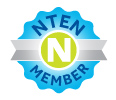
Synchrony: the process by which patterned behavior is created among many individuals without conscious control.
In a Social Source ecosystem there are a lot of actors: developers (building software), hosters (providing software as a service to customers), integrators (modifying software for customer needs), customers (using the software), etc.
Traditional proprietary software vendor models try to coordinate those actors under a single vendor. Developers have to use the SDK (software development kit) approved by the intellectual property owner. Hosters have to pay the intellectual property owner royalties. Integrators are only available from "partner programs" organized by the intellectual property owner. At least some portion of the customer spend to use the software goes to the intellectual property owner.
Even in the nonprofit sector this command and control model is prevalent.
The rational for this command and control model is that the resulting system has rules, standards and is predictable... if no one is in control, that would be too risky.
The concept of Synchrony challenges this analysis. If you have a system of actors that is communicating and engaging in some type of rhythmic give and take, those actors will, over time sync up with one another.
In a Social Source world, software developers, integrators, hosters and customers all communicate with one another, ask one another to meet their need, and contribute innovations back and forth. Over time, this rhythmic give and take yields coordinated cooperative action.
...the combination of strong and weak links can create unexpected and spontaneous outbreaks of coordinated behavior across decentralized networks.
The partnership between the Social Source Foundation and CivicSpace labs to build and deploy CiviCRM is a good example of strong links in the network. Each organization also has many weaker links in the nonprofit technology sphere, the political sphere and the open source community.
This emergent Social Source ecosystem has already begun rhythmic oscillation... PicNet and CivicActions are starting to use the technology for customers and are increasingly communicating with the partners with the strong links (CivicSpace Labs and Social Source Foundation). Over time, if enough actors join the system, communicate and exchange innovations, unexpected coordinated behavior should start breaking out across the network.
We believe these yet to be discovered opportunities for coordination will create major positive changes in the field of social purpose technology for non-profits and NGOs.


